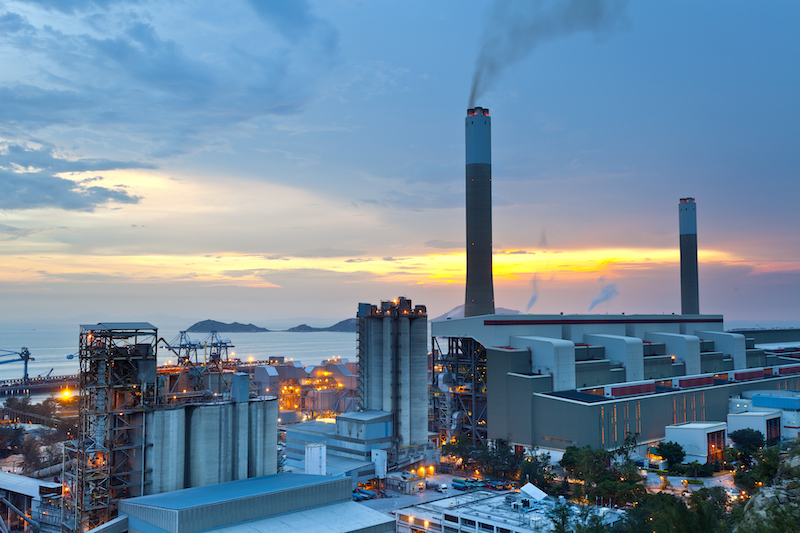
The proposed rule would increase carbon dioxide limits for certain coal-powered plants.
In an effort to keep his 2016 campaign promise to revitalize the U.S. coal industry, President Donald J. Trump has directed his Administration to promote coal exports and reduce regulatory burdens on coal. Following this directive, the U.S. Environmental Protection Agency (EPA) proposed a rule in December that would reduce regulations on coal-generated electricity. Those in the coal industry hail the proposed rule as much needed regulatory relief, but environmentalists denounce it as foolish and harmful.
EPA’s proposed rule would modify a 2015 regulation on carbon dioxide emissions that set emission limits for new or extensively renovated coal power plants and required the plants to incorporate carbon capture and storage technology—a process that involves capturing and injecting carbon dioxide into underground rock formations for permanent storage.
The proposed rule would alter the Obama-era rule by increasing the allowable carbon dioxide emission limits and eliminating the requirement for carbon capture and storage. Instead, EPA would require power plant managers to operate their plants in the most efficient manner possible while remaining under the new, less stringent emission limits.
EPA justifies these proposed changes due to the high costs of carbon capture and the limited geographic availability of carbon storage, as only certain areas have suitable geology for storing carbon dioxide. If a power plant is not near a region with the right type of rock for carbon storage, the plant would have to construct pipelines to more suitable areas.
Acting EPA Administrator Andrew Wheeler claimed that the proposed rule would replace “onerous regulations with high, yet achievable, standards” and will help “keep energy prices affordable.” The coal industry applauded the proposed rule, with one industry group stating that the change “would make it feasible for new coal plants to be a viable option in the future.”
Critics have slammed EPA’s proposed changes, however. Environmental organizations such as the Natural Resources Defense Council have called the proposal “foolhardy.” The Sierra Club has said the proposed rule is another “thoughtless” attempt by the Trump Administration to help the coal industry at the expense of public safety. Such critics believe that the proposed rule would increase carbon dioxide emissions at a time that calls for decreased emissions.
But whether the proposed rule would in fact increase emissions depends on who answers this question.
EPA believes that its proposed rule would not increase emissions because only a limited number of new coal power plant constructions or large renovations at existing plants would have triggered the more stringent requirements of the Obama-era rule. EPA states that, when the agency issued the original rule in 2015, it did not expect the rule to have much impact since there were not many coal-fired power plants being built or renovated in the first place. EPA argues that this fact remains true since the use of coal power as an electricity source continues to decline.
Expert evidence might support EPA’s position on this point. In a 2018 report, Greenpeace, CoalSwarm, and the Sierra Club found no new coal plants in the United States under construction or in preconstruction. Utility companies are retiring coal plants at a rapid rate because natural gas and renewable energy are cheaper power sources than coal. Data from the federal Energy Information Administration reveal the long-term nature of this trend: As a source of electricity, coal has declined by nearly 40 percent since 2008.
Even though new construction or large renovations of coal power plants may not lead to increased emissions, some experts believe that the proposed rule will cause an increase in pollution by encouraging small renovations that extend the operating lives of existing coal power plants.
The original 2015 rule applied to new construction and large renovations only. If a coal power plant made small renovations or upgrades, the emission limits and carbon capture and storage requirement did not apply, and other regulations governed. The EPA’s proposed rule, however, would remove this distinction and set the emission standards for small renovations to be the same as those for new construction or large renovations. Because the proposed rule would raise the emission limits overall, it would raise emission limits for small renovations as well.
Critics worry that increasing the emission limits for small renovations would have two effects. First, utility companies that make small modifications to coal power plants would see their allowed emissions increase, which critics argue would result in increased emissions. Second, by increasing the allowable emission levels, the proposed rule could tilt the balance when a company decides whether to shutter an existing coal power plant or to make upgrades that extend its operating life.
Administrator Wheeler signed the proposed rule on December 6, 2018. The public comment period will close on February 19.



